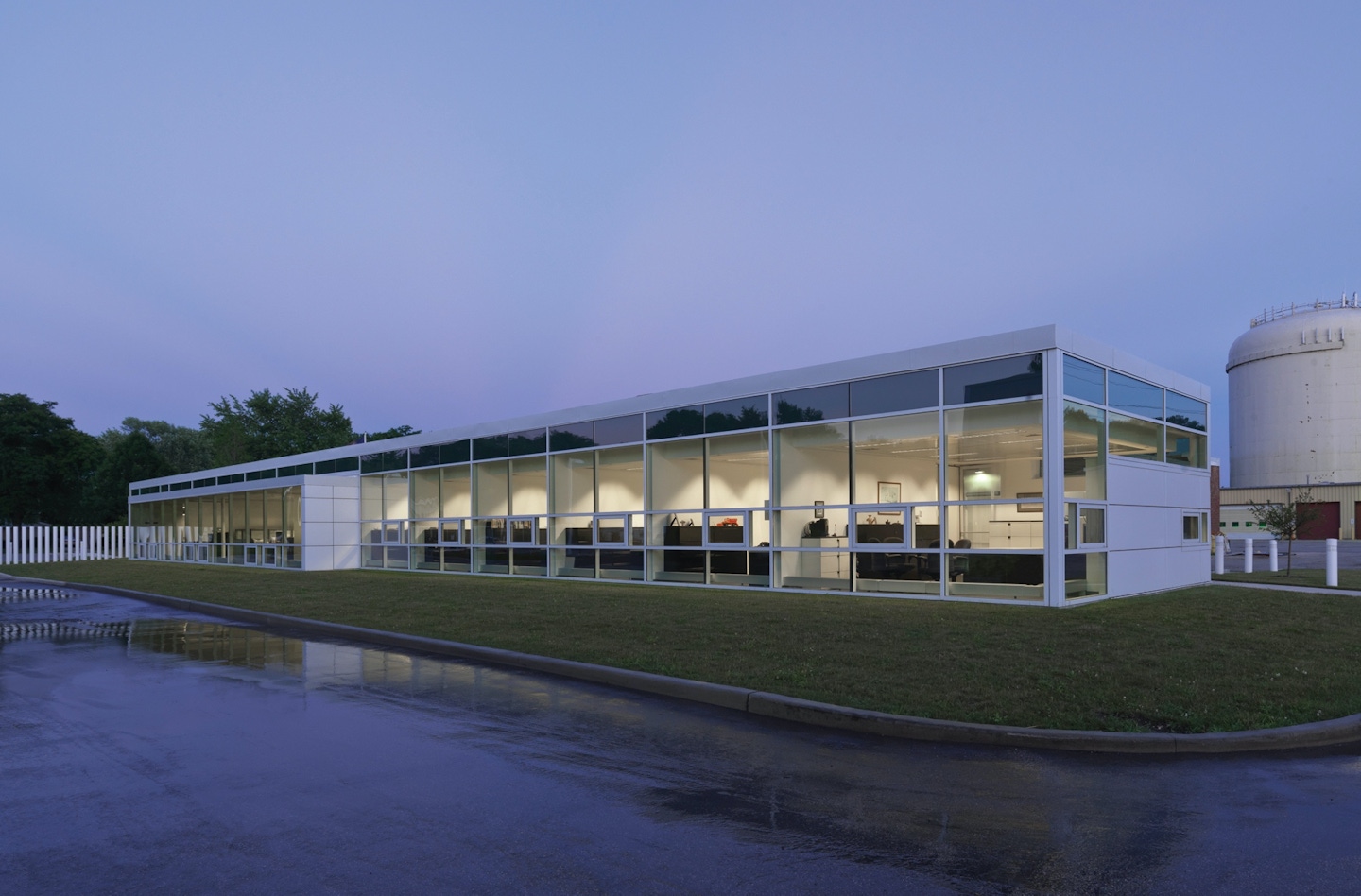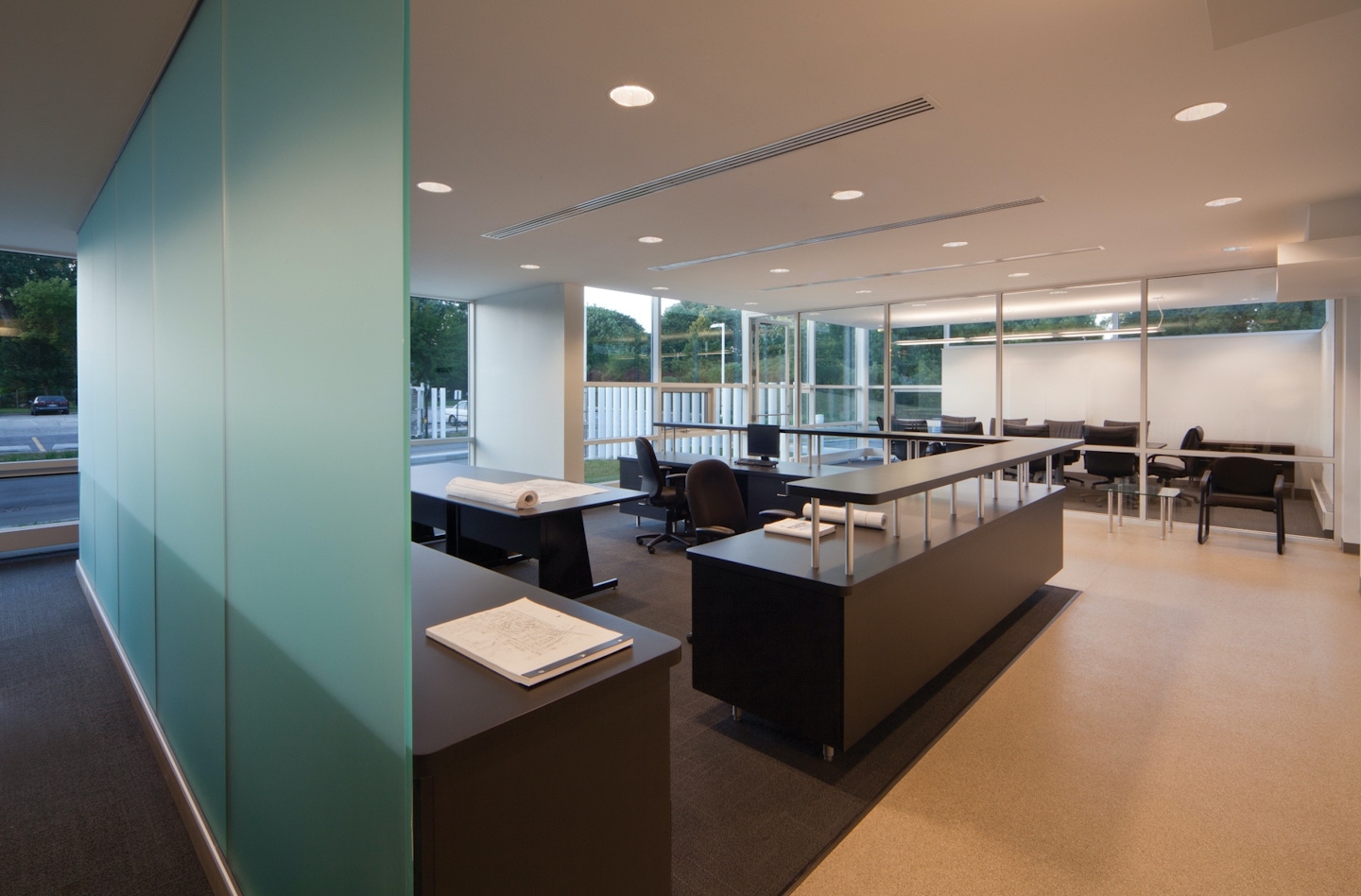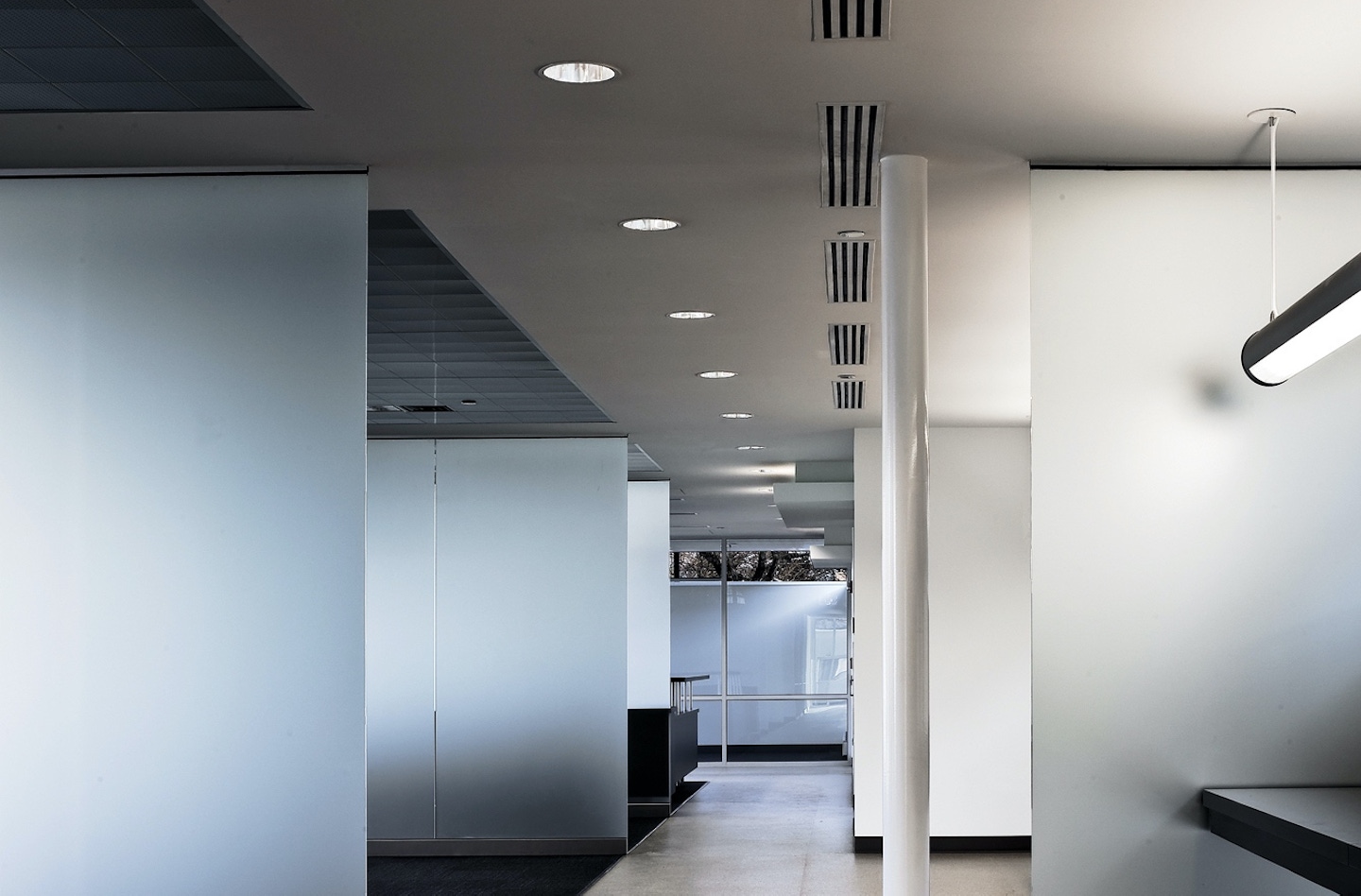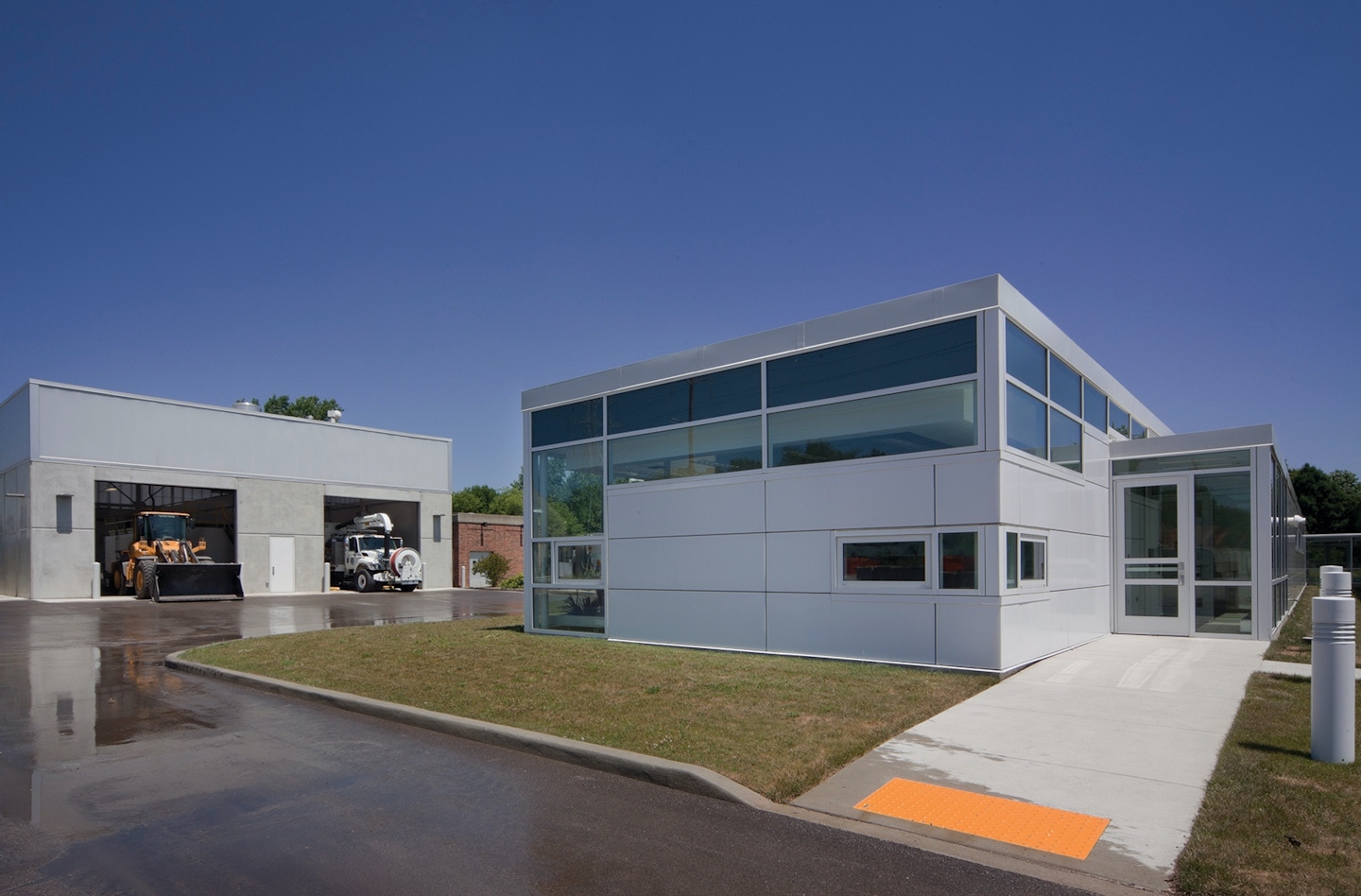The Village of Wilmette, in an effort to improve the quality and efficiency of their Public Works operations, commissioned Epstein to provide architectural design and engineering services for the expansion of their existing 15,000-square-foot facility at 711 Laramie Avenue. The expansion project consists of a 5,000-square-foot administration building and a 5,000-square-foot wash bay building.
The administration building accommodates offices and open work station areas for supervisors and superintendents from the streets, forestry, water and sewer departments. The wash bay building can accommodate four trucks simultaneously and two of the wash bays are automatic while the remaining two are manual. The wash bay equipment has been specified with a unique water recycling system.
The building has also been designed with a translucent clerestory to maximize natural light and minimize electrical energy usage and achieved LEED-NC Gold.
The existing Public Works Facility is an amalgam of various buildings, constructed over a period of approximately sixty years. Existing buildings on the site range from a 1950’s Bowstring Truss Building, to various pre-engineered out-buildings. The priority with this project was to provide a new humane work environment which would enhance the quality of work-life for municipal workers as well as the quality of the work produced.
To promote these values, the building was designed as a linear structure (25 feet wide by 250 feet long) in order to ensure that all work areas have access to natural light and natural ventilation.
The major glass façade is oriented to the north, providing for constant visual monitoring of trucks entering and exiting the facility, as well as tempering heat gain effects in the summer. The south façade, facing the existing building, is a highly insulated metal panel façade, enhancing energy efficiency as well as acting as a visual screen from the existing Bowstring Truss building.
The linear addition is connected to the existing masonry building by a small free-standing glass entry vestibule, which provides for a separation between the new building and the existing structure. This architectural and structural isolation strategy not only provides the opportunity to wash the building in natural light, but also enables the existing building to be demolished and replaced in the future without any modification to the new addition.







